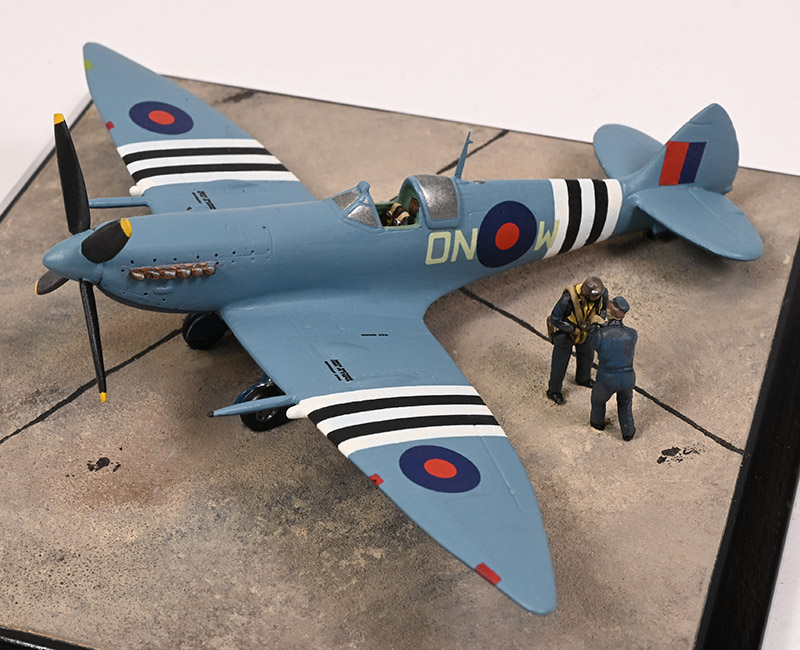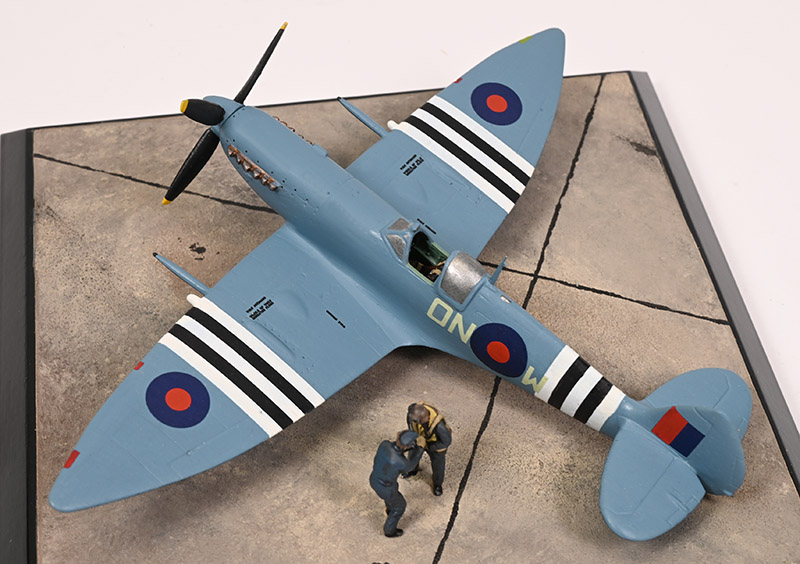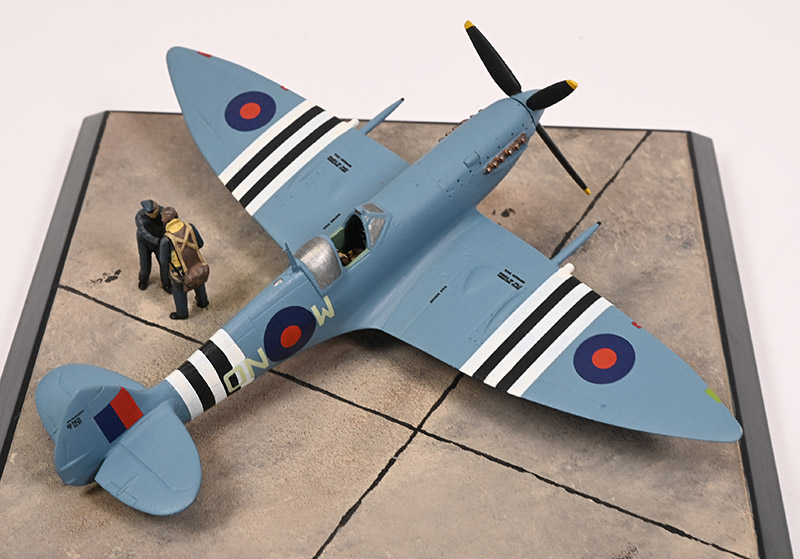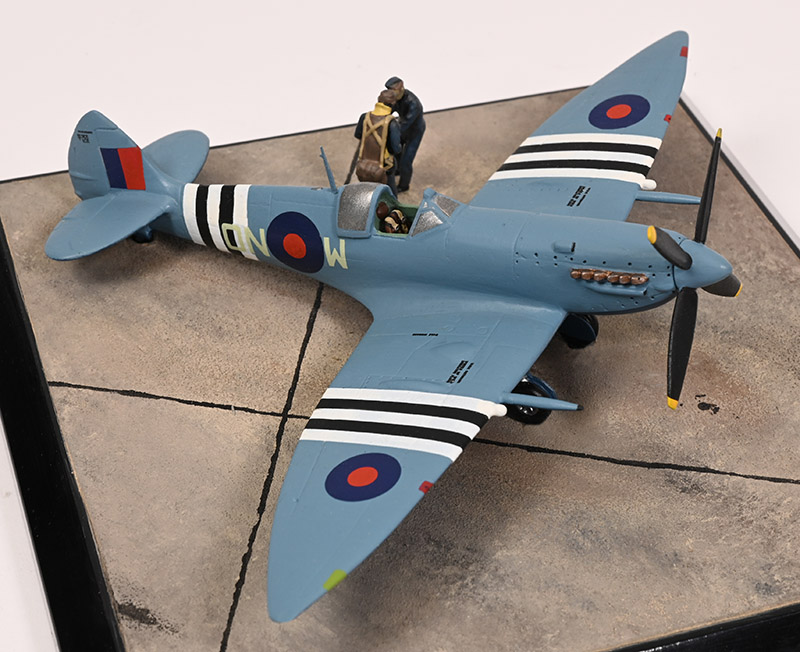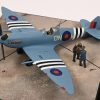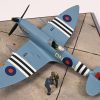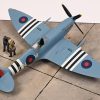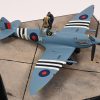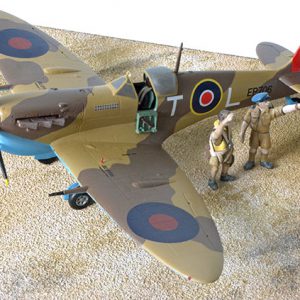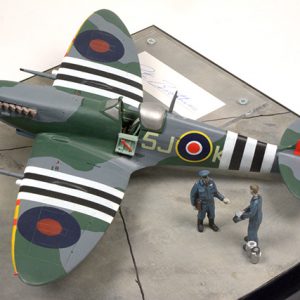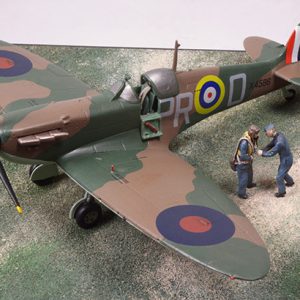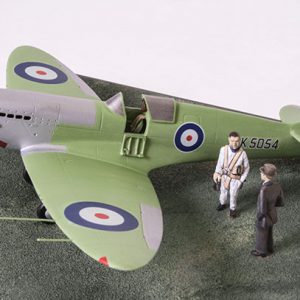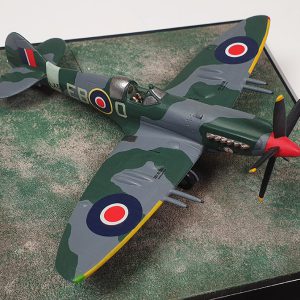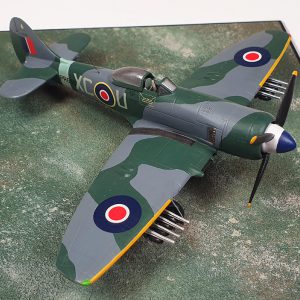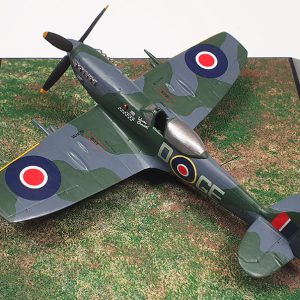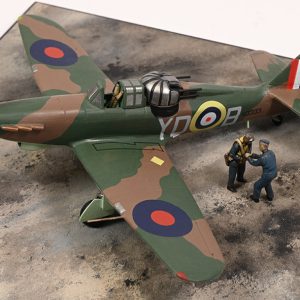Supermarine Spitfire HF Vll MD139 ON-W
124 Squadron, Flg Off Walter Hibbert, June 1944
It was not just the airframe of the Spitfire which continued to be developed throughout the war; its power plant, the legendary Rolls Royce Merlin, was also evolving. The 60 series engines were fitted with a two-stage, two-speed supercharger and intercooler. Whilst this resulted in an engine capable of operating at higher altitudes, it also increased the size of the unit. As a consequence, when mated to the Spitfire airframe, the nose of the aircraft was extended to accommodate it. The potential of a high altitude fighter was soon realised and so the Spitfire Mk VII was born. The aircraft was fitted with a pressurised cockpit, and extended wingtips and rudder to aid performance at its maximum altitude of 45,700 feet. Additional fuel tanks were fitted into the leading edge of the wings, the aircraft carrying the ‘C’ type wing armament of two 20mm Hispano cannon (120 rounds per gun) and four 0.303in Browning machine guns (350 rounds per gun). 141 Spitfire VIIs were built.
The Spitfire Mk VII’s provided invaluable high altitude ‘top’ cover defending other aircraft during the invasion of Europe. Later in the war many Spitfire Mk VII’s were fitted with standard wing tips and used in more conventional fighter roles. In March of 1943, 124 Squadron transitioned to the Sptifire VII at North Weald and began using the marque on defensive operations. The first confirmed kill for a Spitfire VII occurred on 15 May 1943 when F/O Oliver Willis shot down a reconnaissance Bf 109G-4, Werk No. 14906, of 4.(F)/123 flown by Lt. Wilhelm Marcks.
Walter Hibbert learned to fly at the Service Flying Training School in Moose Jaw, Saskatchewan in Canada, before going to 56 Operational Training Unit in Sutton Bridge, Lincolnshire. His first posting, in July 1942, was to Castleton in Caithness, where 124 Squadron was based, before his squadron moved to RAF Biggin Hill in Kent. Then in March 1943 he contracted polio and was due to be invalided out of the service. He was told he would not fly again but made a full recovery and resumed active duty. He was posted to 53 Operational Training Unit in Wales before going to Central Gunnery School at Sutton Bridge and then Junior Commanders’ School. He rejoined 124 Squadron in December 1943 and remained with it until September 1944, taking part in air cover for the D-Day Landings and claiming his second victory – a Messerschmitt Bf 109 – over the Channel in the aftermath of the 6 June operation.
Spitfire MD139/ON-W was an Eastleigh built airframe painted in medium sea grey and PRU blue. Narrow invasion stripes on upper and lower surfaces of the wings and fuselage were for D-Day identification purposes.


